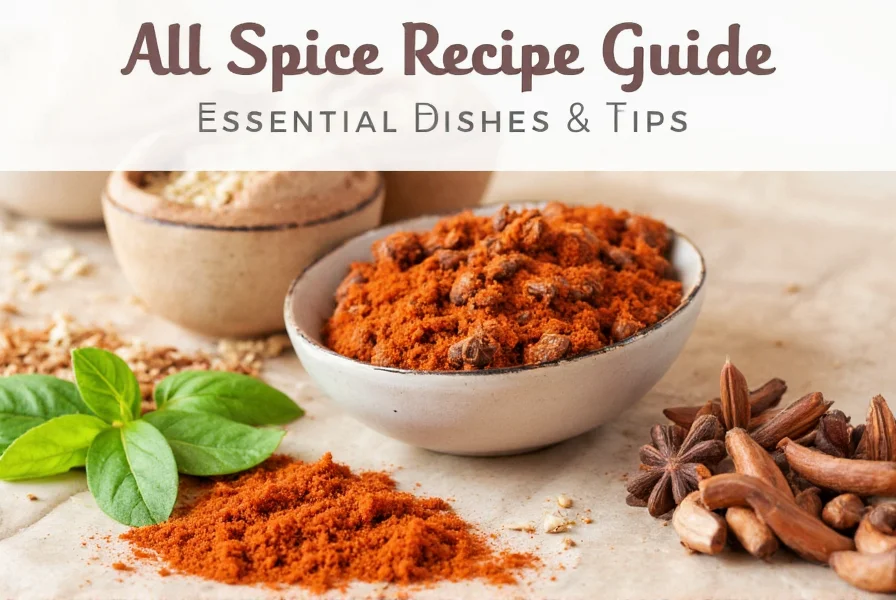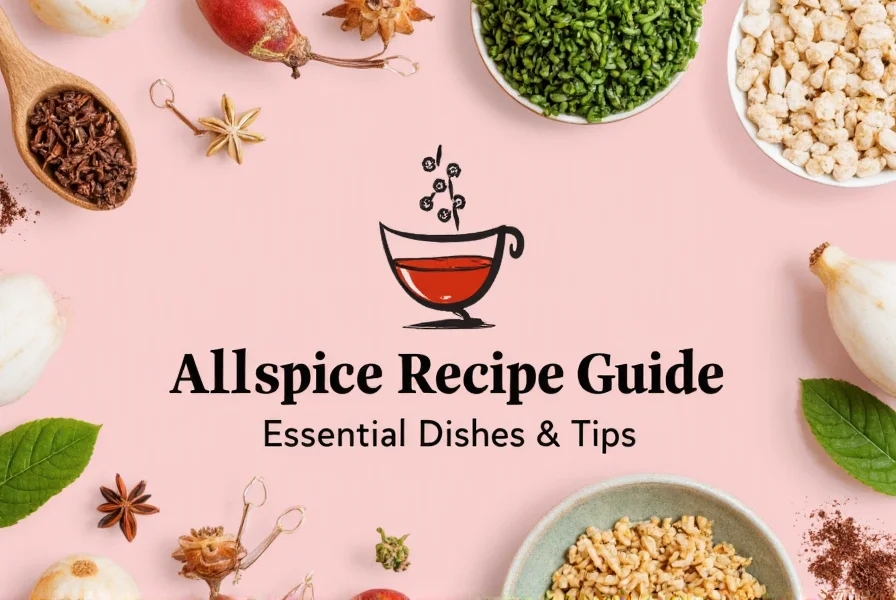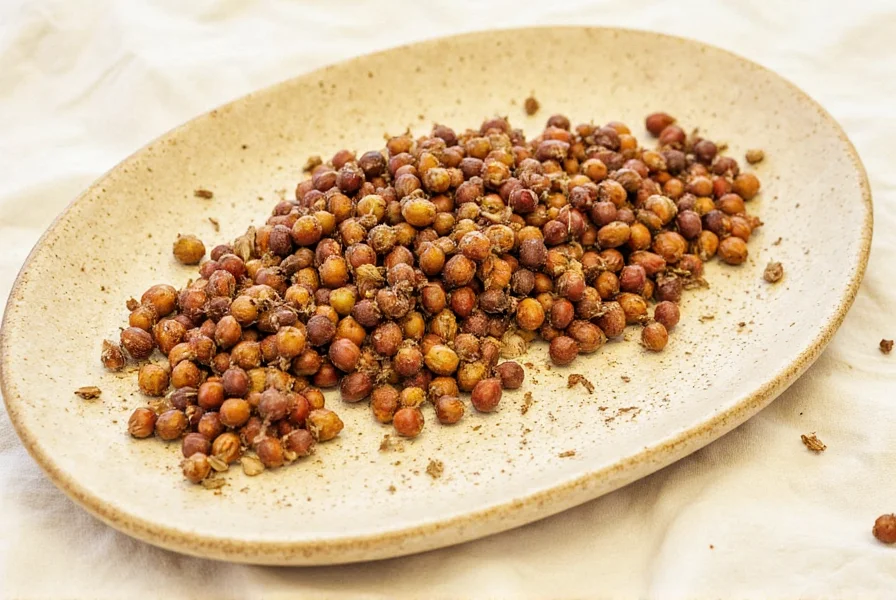Many home cooks mistakenly believe allspice is a mixture of spices. In reality, this aromatic powerhouse comes from one source: the dried unripe berries of the Pimenta dioica tree native to the Caribbean. Understanding how to properly use allspice transforms ordinary dishes into extraordinary culinary experiences. This comprehensive guide explores authentic applications, precise measurements, and professional techniques for incorporating allspice into your cooking repertoire.
Understanding Allspice: More Than Just a Name
Allspice earned its name because its complex flavor profile resembles a blend of cinnamon, nutmeg, and cloves. However, it remains a singular spice with unique chemical compounds that create its distinctive warmth. The highest quality allspice comes from Jamaica, where specific growing conditions produce berries with optimal oil content. When shopping, choose whole berries over pre-ground powder whenever possible—they retain flavor significantly longer. Crush berries just before use for maximum aromatic impact in your jamaican jerk chicken recipe with allspice.
| Spice Form | Equivalent Measurement | Best Used For |
|---|---|---|
| Whole berries | 6 berries = 1 tsp ground | Marinades, pickling, slow-cooked dishes |
| Ground allspice | 1 tsp = 6 berries | Baking, rubs, quick sauces |
| Allspice essential oil | 1 drop = 1/4 tsp ground | Flavoring extracts, syrups |
Global Culinary Applications of Allspice
Allspice bridges multiple culinary traditions. In Jamaican cuisine, it forms the backbone of jerk seasoning, where its pungency complements Scotch bonnet peppers and thyme. Middle Eastern cooks incorporate allspice into meatball mixtures and rice pilafs, often pairing it with cardamom and black pepper. Scandinavian bakers use it in gingerbread and holiday cookies, while Latin American kitchens feature it in mole sauces and adobo marinades. Understanding these cultural contexts helps you create authentic allspice recipes that honor traditional techniques while adapting to modern kitchens.
Perfect Allspice Substitutions
When you need an allspice substitute in baking or cooking, combine equal parts cinnamon, nutmeg, and cloves. For every teaspoon of allspice required, use 1/3 teaspoon each of these three spices. This blend works well in sweet applications like apple pie but lacks the subtle peppery notes of true allspice in savory dishes. For Middle Eastern allspice recipes, add a pinch of black pepper to the substitute blend. Remember that pre-mixed pumpkin pie spice contains allspice already—use 1.5 teaspoons of pumpkin pie spice to replace 1 teaspoon of pure allspice.
Signature Allspice Recipes
Jamaican Jerk Chicken with Authentic Allspice Marinade
This traditional preparation showcases how allspice interacts with other bold flavors. Combine 2 tablespoons freshly ground allspice with 1 tablespoon thyme, 4 chopped Scotch bonnet peppers, 6 crushed garlic cloves, 1/4 cup soy sauce, 1/4 cup lime juice, and 2 tablespoons brown sugar. Marinate chicken for at least 4 hours before grilling over pimento wood for authentic flavor. The allspice penetrates the meat while balancing the heat from the peppers.

Allspice-Spiced Apple Pie
Elevate your classic apple pie with 1 teaspoon of freshly ground allspice added to the filling. The spice enhances the natural sweetness of apples without overpowering them. Combine with 2 teaspoons cinnamon and 1/4 teaspoon nutmeg for a complex flavor profile. For professional results, toss sliced apples with the spice mixture and let sit for 30 minutes before assembling the pie—this allows the allspice to penetrate the fruit cells for deeper flavor integration.
Middle Eastern Lamb and Apricot Stew
This savory-sweet dish demonstrates allspice's versatility beyond Caribbean cuisine. Brown 1.5 pounds of lamb shoulder, then sauté with 1 chopped onion, 3 minced garlic cloves, and 1.5 teaspoons ground allspice. Add 1 cup chopped dried apricots, 2 cups beef broth, and simmer until tender. The allspice complements the fruit's sweetness while cutting through the richness of the lamb—perfect for understanding how to use allspice in diverse culinary applications.
Professional Allspice Techniques
Maximize allspice's potential with these chef-tested methods. Toast whole berries in a dry skillet for 60 seconds before grinding to release volatile oils. For baking applications like how to use allspice in apple pie, bloom ground allspice in melted butter for 30 seconds to intensify its flavor before incorporating into batters. When making rubs, combine allspice with salt crystals to help distribute the spice evenly across meat surfaces. Remember that allspice's flavor intensifies over time—dishes often taste better the day after preparation as the spice fully integrates.
Storage and Measurement Guidance
Preserve allspice's potency with proper storage techniques. Keep whole berries in an airtight container away from heat and light—they maintain peak flavor for 2-3 years. Ground allspice loses potency faster, remaining optimal for only 6-12 months. For precise allspice measurement conversion, remember that 1 teaspoon of ground allspice equals approximately 6 whole berries. When substituting between forms, weigh rather than measure by volume for accuracy—1 teaspoon ground allspice weighs about 2 grams.

Troubleshooting Common Allspice Mistakes
Many home cooks make these allspice errors. Using pre-ground allspice that's been sitting in the pantry for over a year results in weak flavor—always check freshness dates. Overheating allspice during toasting burns its delicate oils, creating bitterness. Adding ground allspice too early in long-cooked dishes diminishes its aromatic compounds—stir it in during the last 15 minutes of cooking. For allspice simple syrup recipe success, steep whole berries rather than ground spice to prevent cloudiness. Understanding these nuances separates adequate allspice recipes from exceptional ones.











 浙公网安备
33010002000092号
浙公网安备
33010002000092号 浙B2-20120091-4
浙B2-20120091-4